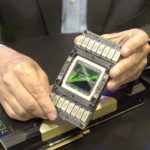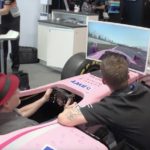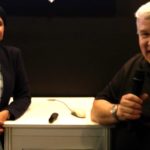Today Asetek announced an order from a new European OEM customer to service demand for an HPC (High Performance Computing) installation. “The order is for Asetek’s RackCDU D2C (Direct-to-Chip) liquid cooling solution and is valued at $32,000 USD with delivery scheduled for Q3 2017.”
How PBS Works Makes HPC Easy to Use
In this video from ISC 2017, Bill Nitzberg from Altair demonstrates how easy it is to launch jobs with PBS Pro. “Altair’s PBS Works workload management suite is used by thousands of organizations worldwide to simplify the administration and use of HPC clusters, clouds and supercomputing environments.”
Panel Looks at Improving Diversity in HPC
In this video from ISC 2017, Lara Kisielewska moderates a panel discussion on Diversity in HPC. “Through collaboration and networking, the Women in HPC community strives to bring together women in HPC and technical computing while encouraging women to engage in outreach activities and improve the visibility of inspirational role models.”
IO Management with DDN IME 1.1
In this video from the 2017 DDN User Group meeting at ISC, James Coomer from DDN presents: IME Update – I/O Profiling of applications. “DDN’s Infinite Memory Engine (IME) is a scale-out, flash-native, software-defined, storage cache that streamlines the data path for application IO. IME interfaces directly to applications and secures IO via a data path that eliminates file system bottlenecks.”
Nvidia Volta GPUs Power HPC & AI at ISC 2017
In this video from ISC 2017, Keith Morris from NVIDIA describes how the company’s next-generation Volta GPU technology will drive HPC and AI applications to new levels of performance. “GV100 not only builds upon the advances of its predecessor, the Pascal GP100 GPU, it significantly improves performance and scalability, and adds many new features that improve programmability. These advances will supercharge HPC, data center, supercomputer, and deep learning systems and applications.”
DDN: Enabling Scientific Discovery and Exascale Initiatives
Alex Bouzari gave this talk at the DDN User Group. “The goal of the event is to gather the community during ISC to discover how HPC organizations are assessing and leveraging technology to raise the bar on HPC innovations and best practices. From exciting user presentations to engaging roundtable conversations and groundbreaking technology updates, this can’t-miss event delivers the ideas and inspiration to help your cutting-edge HPC initiatives transform the world.”
Univa Powers Formula One and More at ISC 2017
In this video from ISC 2017, Gaétan Didier Head of CFD, Sahara Force India Formula One Racing Team describes how he uses Univa software to manage CFD workloads that simply cannot be done in a wind tunnel. After that, Bill Bryce from Univa describes how the company’s software powers simulation for everything from Formula 1 racing to manufacturing and life sciences.
Video: OpenACC Update from ISC 2017
In this video from ISC 2017, Sunita Chandrasekaran and Michael Wolfe present an overview of OpenACC and a preview of upcoming GPU Hackathon events. “OpenACC is a user-driven directive-based performance-portable parallel programming model designed for scientists and engineers interested in porting their codes to a wide-variety of heterogeneous HPC hardware platforms and architectures with significantly less programming effort than required with a low-level model.”
Deep Learning in the Spotlight at ISC
This year the ISC conference dedicated an entire day to deep learning, Wednesday, June 21, to discuss the recent advances in artificial intelligence based on deep learning technology. However it, not just the conference where deep learning was dominating the conversation as the showfloor of the exhibition hosted many new products dedicated to optimizing HPC hardware for use in deep learning and AI workloads.
Deep Learning Comes to the Student Cluster Competition
“We decided to use a slightly more interesting use case of solving for Captcha because it not only highlights the power of deep learning to be a useful tool create models to recognize and classify unwieldy data, such as distorted characters, grainy images and overlapping characters, but it also demonstrates that it is possible for this powerful technology to be used in less positive ways, such as solving for security or privacy. Realizing that everyone has access to the tools we use to move society forward, we need to be aware of the possible mis-use, especially as it becomes more pervasive across industry, healthcare, financial services, and the like.”












